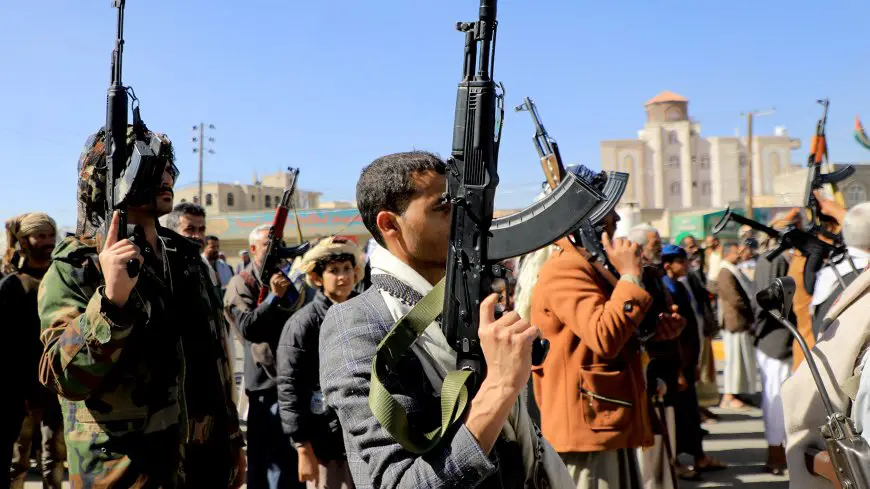Middle East Flashpoint 2025: What’s Powering the Surge in Proxy Wars
Analysis of the 2025 surge in Middle East proxy conflicts—covering hostilities in Syria, Gaza, and Yemen, and the roles of Iran, Israel, and US foreign policy.

Turbulence Across Syria, Gaza & Yemen
2025 has brought a sharp escalation in Middle East conflict dynamics, which increasingly resemble a network of interlinked “wars by proxy.” Israeli airstrikes on Iran and its allied installations in Syria and Iraq, retaliatory drone launches from Hezbollah, and renewed Yemen strikes signal a volatile regional transformation reuters.com+10washingtonpost.com+10theguardian.com+10.
At the heart of the violence is Syria—a launchpad for Iran‑backed militias like Hezbollah and Iraqi groups such as Kataib Hezbollah. Recent precision strikes on Damascus and border sites have triggered recorded warnings from Iranian-aligned factions threatening U.S. bases in Iraq and Syria reuters.com.
In Gaza, intermittent exchanges between Israel and Hamas continue, but the primary expansion of hostilities is playing out in Yemen, within the context of the Red Sea crisis. The U.S.–UK’s Operation Prosperity Guardian has resumed targeting Houthi missile launches, prompting a parallel Israeli air campaign against Houthi-controlled areas since May en.wikipedia.org+3en.wikipedia.org+3en.wikipedia.org+3.
Iran–Israel: Preemption and Retaliation
June 2025 marked a seismic escalation: Israeli pre-emptive strikes across Iran’s nuclear infrastructure, including Natanz, aimed to significantly impair Tehran’s weapons program and hobble its regional militia network nypost.com+15theguardian.com+15businessinsider.com+15.
In close retaliation, Iran unleashed hundreds of missiles and drones toward Israeli territory. Although advanced missile-defence intercepts limited the impact, the incident demonstrated Iran’s readiness to engage directly, not solely through proxies .
This bilateral dynamic underscores the evolution of regional conflict: between hard-power military strikes and power projection through non-state actors.
The Proxy Web: Who’s Involved?
-
Hezbollah and Iraqi Militias: Despite weakened leadership in Lebanon, Hezbollah and Iraq’s Kataib Hezbollah remain on edge, warning against U.S. intervention and threatening regional reprisals in support of Iran .
-
Houthis and Yemen: Their ballistic missile and UAV attacks on Israel, framed as solidarity with Gaza, led to multi-national military intervention. Iran’s material support has enhanced their reach and emboldened their regional posture en.wikipedia.org+5en.wikipedia.org+5atlanticcouncil.org+5.
-
U.S. and Allies: The U.S. remains highly engaged—supporting Israeli defence systems, deploying naval coalitions to protect Red Sea shipping, and coordinating Western airstrikes against Houthi targets en.wikipedia.org+1en.wikipedia.org+1.
Strategic Implications
-
Fragmentation of Regional Order: Actions against Iran's nuclear and militia capacity—especially in Syria—have diminished Tehran’s regional influence, but the threat of asymmetric retaliation remains high .
-
Global Oil & Trade at Risk: Repeated disruptions in the Red Sea threaten global shipping lanes, prompting collective naval interventions and risking wider spillover into the Indian Ocean and Strait of Hormuz .
-
U.S. Policy Dual Role: Washington’s dual-track posture—enforcing sanctions and performing direct military interventions while supporting diplomacy with Iran—positions it as both a stabilizer and escalation risk .
Diplomatic Frontlines
-
United Nations & Gulf States: Calls for de-escalation from nations such as Saudi Arabia, Jordan, and wider Arab League members reflect concern at the potential spread of hostilities—especially amid flare-ups in Lebanon and Red Sea trade theguardian.com.
-
Multilateral Negotiations: U.S.–led talks with Iranian officials remain stalled following the strikes, while separate overtures continue concerning Gaza and Yemen—though none are making decisive headway atlanticcouncil.org+15americafirstpolicy.com+15theguardian.com+15.
Outlook: Where This Is Headed
-
Risk of Wider Escalation
Prolonged airstrikes or convoy losses could drag more regional forces into open conflict, especially Hezbollah or Iraqi proxies launching against U.S. or Gulf targets. -
Fragmented Deterrence
With reduced coherence in Iran’s proxy network, local groups are more reticent—but not uniformly inactive. Their restraint may hold if Tehran is contained. -
Diplomacy Under Strain
Ongoing distrust—Israel’s hard-line strikes, U.S.–Iran standoffs, and Gulf concerns—could render any negotiated settlement fragmentary and temporary.
Conclusion
The Middle East’s current proxy war surges are not isolated skirmishes—they reflect a strategic struggle for influence between Iran and Israel, underscored by U.S. and allied military engagement. From Syria’s battlefields to Yemen’s shores and Gaza’s frontlines, 2025’s flashpoints illustrate how regional power plays are increasingly conducted through decentralised, multi-actor conflict.
Long-term stability will require rebuilding donor trust, reviving cohesive diplomacy, and reinvigorating collective security frameworks beyond national interests—all while navigating the murky reality of covert military strategy.














